8 ocean vs land life facts
Part of:
Convex Seascape SurveyFind out how life differs between the ocean and land.
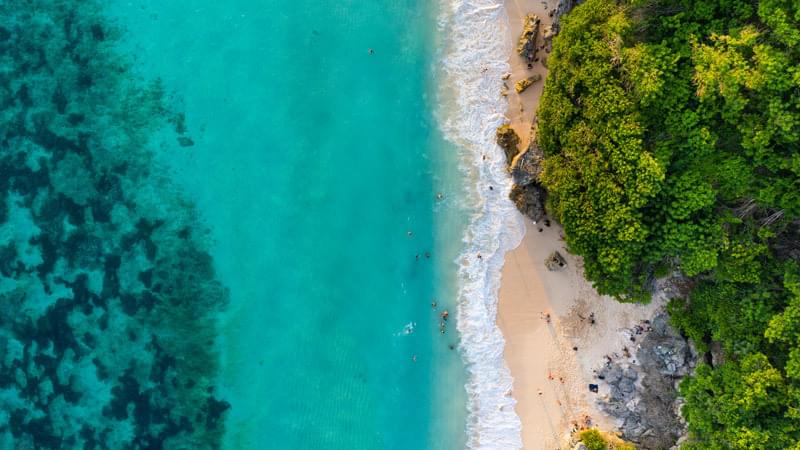 iStock / Andrey Danilovich
iStock / Andrey Danilovich
The ocean contains most of the world’s living space.
The ocean contains a huge 97% of the habitable space on the planet. This is not too surprising if you think that the ocean is a truly three-dimensional habitat, whereas most life on land lives on or near its surface.
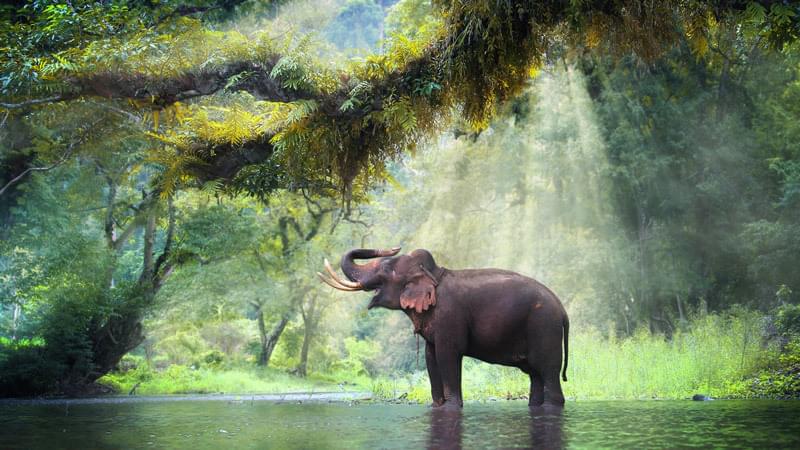 iStock / goodze
iStock / goodze
Most life on the planet is on land.
Although the ocean is huge, life is spread out quite thinly. The areas near the shore can seem very abundant, but these do not represent what most of the ocean is like. It is estimated that 86% of biomass is found on land, 1% is in the ocean, and the remaining 13% is found in the deep subsurface (deep in rocks and soils on land, and in sediments in the ocean).
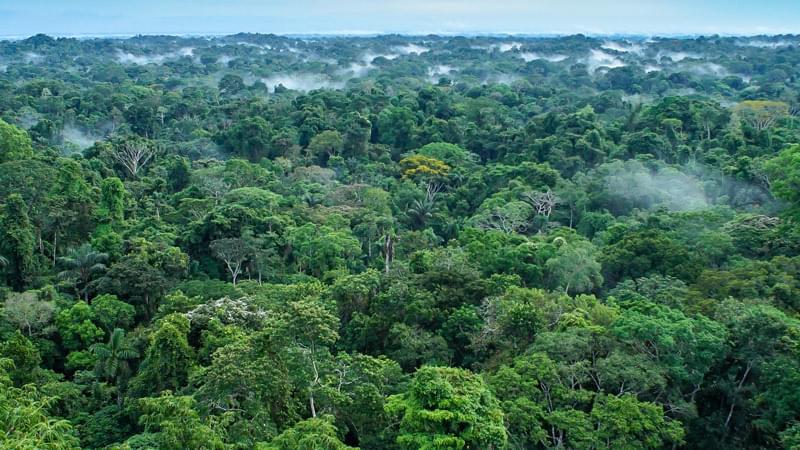 iStock / Maris Maskalans
iStock / Maris Maskalans
Most plant life is found on land.
There is nearly 500 times as much plant biomass on land compared to the ocean. 99.8% of plant biomass is found on land, with 0.2% of plant biomass in the ocean.
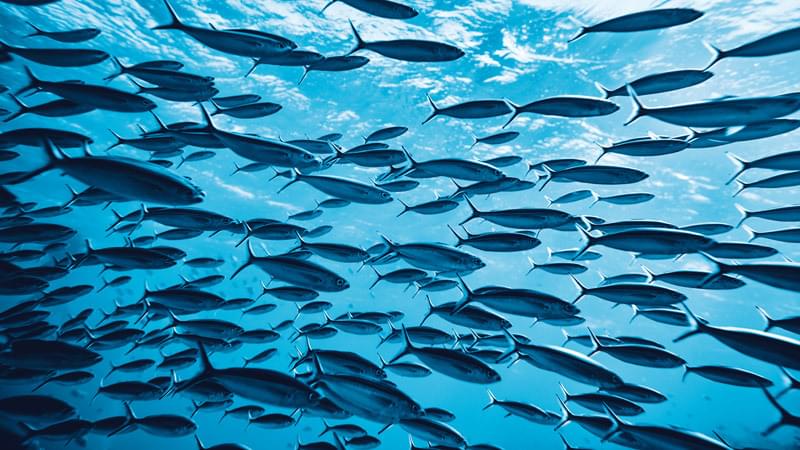 iStock / stock colors
iStock / stock colors
Most animal life is in the ocean.
22% of animal biomass is found on land, whereas 78% of animal biomass is found in the ocean. The ocean habitat is huge compared to the land. It is also a stable and diverse environment. There is also a high level of food produced by algae, although this is consumed rapidly by animals at the bottom of the food web.
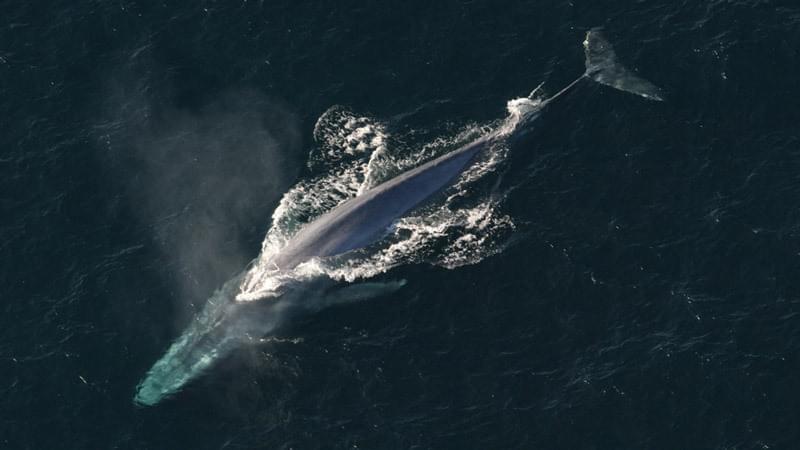 NOAA
NOAA
The largest animal that has ever lived is in the ocean.
The largest animal that has existed is the blue whale. Weighing up to 180 tonnes, it is nearly three times bigger than the heaviest dinosaur thought to roam the land the 36m (118ft) sauropod Patagotitan mayorum.
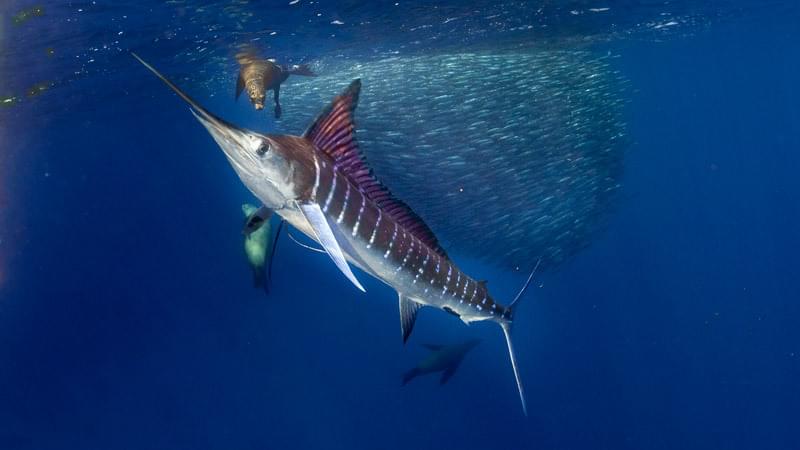 iStock / izanbar
iStock / izanbar
The fastest swimmer on the planet is the black marlin
There is some debate over the top speeds of billfish, the collective name for swordfish, sailfish, and marlin, such as the striped marlin pictured above. Some research suggests that they rarely reach above 22 mph (30 km/h). However, the black marlin has been recorded at an astonishing 82 mph (132 km/h). This compares with the cheetah coming in at 75 mph (121 km/h).
 Wikipedia / Greg Willis
Wikipedia / Greg Willis
No one can be certain where life on the planet began.
Contrary to popular belief, it is hard to know where and how life began on Earth. There are different theories, and without a time machine it may be hard to know for certain. Some scientists think that life on Earth started in warm volcanic gloop 4.1 billion years ago. Others believe life started in the ocean 3.4 billion years ago. The start of life on land as we know it, however, is thought only to have begun about 450 million years ago.
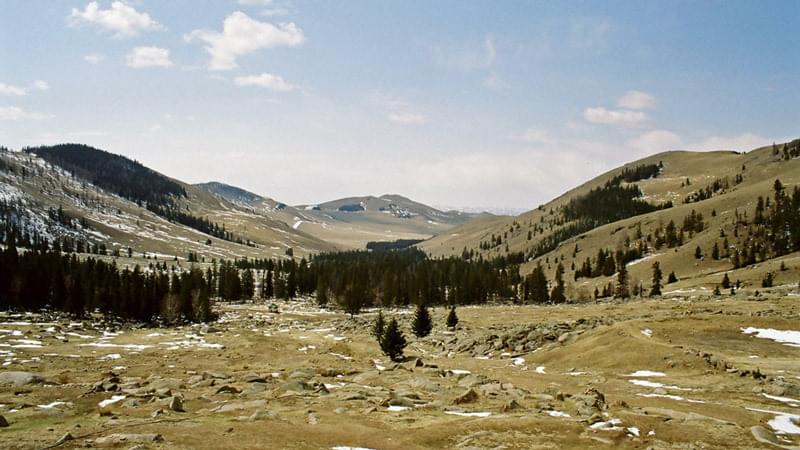 Wikipedia / yeowatzup
Wikipedia / yeowatzup
A greater proportion of land is protected compared to the ocean.
Currently (2023), 17.1% of land is protected, but only 8.2% of the ocean is protected. Efforts are being made to protect 30% of the ocean by 2030, a campaign known as 30x30.